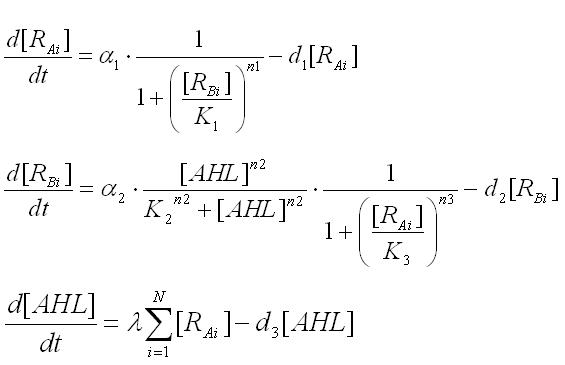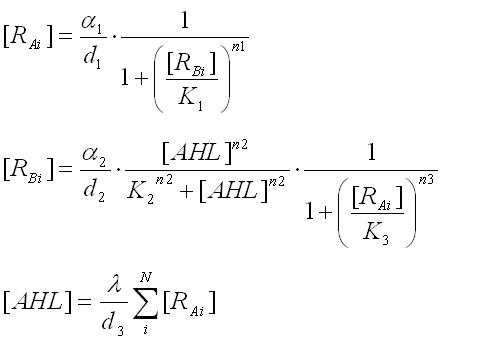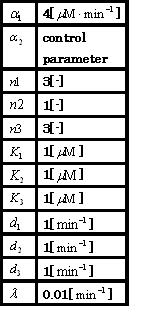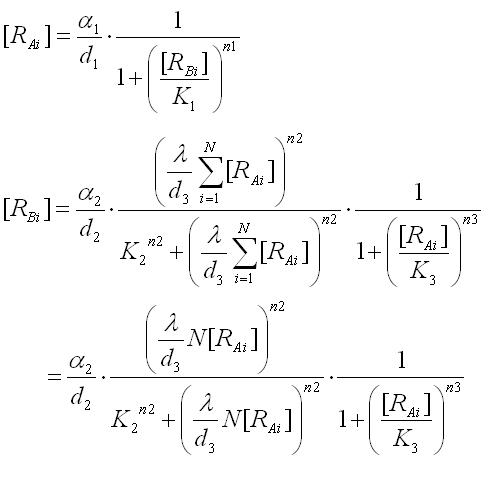Tokyo/Formulation/4.population model
From 2007.igem.org
(Difference between revisions)
| Line 1: | Line 1: | ||
| - | + | Next, to consider the number of cells,the differential equations for multiple cells were given as | |
| - | + | ||
| - | + | ||
| - | + | ||
| - | Next, | + | |
| - | + | ||
<br>[[Image:expression4-1.jpg|400px|]] | <br>[[Image:expression4-1.jpg|400px|]] | ||
| - | <br> | + | <br>where N indicates the number of the cells. |
| - | + | ||
| - | + | ||
| - | + | <br>In the steady state,time derivatives are zero.As a result,the nullclines of this system were derived as | |
| - | <br>In the steady state, | + | |
<br>[[Image:expression4-2.jpg|400px|]] | <br>[[Image:expression4-2.jpg|400px|]] | ||
| - | |||
<br>and then substitute the third equation into the second | <br>and then substitute the third equation into the second | ||
[[Image:parameter4-1.jpg|thumb|150px|]] | [[Image:parameter4-1.jpg|thumb|150px|]] | ||
<br>[[Image:expression4-3.jpg|400px|]] | <br>[[Image:expression4-3.jpg|400px|]] | ||
| - | <br> | + | <br>To analyze the equations, the values in the right table were used. |
| - | + | ||
Revision as of 13:42, 23 October 2007
Next, to consider the number of cells,the differential equations for multiple cells were given as
where N indicates the number of the cells.
In the steady state,time derivatives are zero.As a result,the nullclines of this system were derived as
and then substitute the third equation into the second
To analyze the equations, the values in the right table were used.



